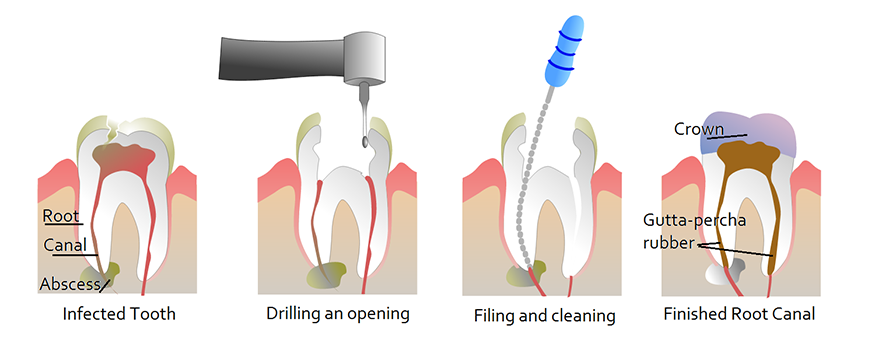Microscopic Pain free Root Canals
Root canal treatment is the cleaning of tiny channels in a tooth root and filling them with a form of rubber. St. Lawrence Dentistry will make every effort to avoid root canal treatments. However, some teeth will need this predictable and straightforward therapy. Root canal or ‘endodontics’ can be a painless experience, and patients are often surprised at the ease of the procedure and the pleasant aftermath. With modern techniques and tools employed by St. Lawrence Dentistry, the success rate of this procedure is very high.
How a Root Canal is Performed: Step by Step
a root canal is essentially a four-step process. Treatment usually takes two office visits.
- First, the dentist administers local anesthesia to numb the tooth and surrounding gums. You’ll feel a bit of a pinch when the needle is injected, but only for a moment. After that, you won’t be able to feel anything. When the tooth is numb, the endodontist might place a dental dam, a small sheet of rubber that isolates the tooth to keep it clean and dry during the procedure.
- Your dentist will then use very small tools, such as a small drill, to access the inside of the tooth by creating an opening in the top portion of the tooth. Next, the dentist will use small files to clear away the damaged pulp from the inside of the tooth. He or she will also use the files to shape the inner chamber of the tooth and root and might irrigate the chamber with water to make sure there isn’t any infected pulp hiding out. Your dentist might also use an antimicrobial solution to kill any remaining bacteria in the chamber and reduce the risk for further infection.
- Once the chamber is thoroughly cleaned and dried, the endodontist will fill it with a rubber-like material called gutta-percha. Then your dentist will close the opening in your tooth with a temporary filling while you wait for the permanent crown.
- After a few weeks, your dentist will finish the treatment by placing a permanent crown or a similar type of restoration on the top of the tooth. Depending on the condition of your natural tooth, the dentist may need to place a small supporting post inside of the root chamber, to make the crown or restoration more stable.
After the Procedure
Taking good care of your teeth and gums is a must after a root canal. Make sure to maintain a good oral care routine at home by brushing twice a day, flossing once a day, and keeping up with your twice-yearly dental cleanings and exams. You might need to schedule an additional visit with your dentist to X-ray the treated tooth and make sure that all signs of infection are gone. With excellent care and attention, a tooth treated with a root canal can stay healthy for the rest of your life. That sounds like a great incentive to keep your smile healthy!
A root canal can seem daunting at first, and the stories you hear don’t help the matter. But the truth is that a root canal isn’t all as painful as you might think, and it can often be the best option for a pain-free smile long-term.

